Raymarine ST1000+, ST2000+ Manual
ST1000 Plus &
ST2000 Plus
Tiller Pilots
Owner’s
Handbook
Document number: 81130-5
Date: June 2005
2 |
ST1000 Plus & ST2000 Plus Tiller Pilots |
Autohelm, HSB (High Speed Bus), SailPilot, SeaTalk and SportPilot are registered trademarks of Raymarine Ltd.
Raymarine, AST (Advanced Steering Technology), AutoAdapt, AutoLearn, AutoRelease, AutoSeastate, AutoTack, AutoTrim, FastTrim, GyroPlus, RayGyro, RayPilot and WindTrim are trademarks of Raymarine Ltd.
Handbook contents © Raymarine Ltd 2005.

|
|
1 |
Contents |
|
|
Contents.................................................................................................... |
1 |
|
Chapter 1: Introduction ....................................................................................... |
3 |
|
1.1 |
Overview ................................................................................................ |
3 |
1.2 |
Specifications ......................................................................................... |
4 |
1.3 |
About this handbook ............................................................................. |
5 |
|
Important Information ........................................................................... |
5 |
|
Product disposal ..................................................................................... |
6 |
Chapter 2: Using the Tiller Pilot .......................................................................... |
7 |
|
2.1 |
Overview ................................................................................................ |
7 |
2.2 |
Using Auto mode ................................................................................... |
8 |
|
Engaging the autopilot (Auto mode) ...................................................... |
8 |
|
Disengaging the autopilot (Standby mode) ............................................ |
8 |
|
Changing course .................................................................................... |
9 |
|
Displaying navigation information pages ............................................. |
11 |
|
Automatic deadband control (Auto Seastate) ...................................... |
12 |
|
Operating hints – trim changes ............................................................ |
13 |
2.3 |
Switching display illumination on and off ............................................ |
14 |
2.4 |
Using Track mode ................................................................................. |
14 |
|
Selecting Track mode ........................................................................... |
14 |
|
Returning to Auto from Track mode ..................................................... |
17 |
|
Cross track error (XTE) .......................................................................... |
17 |
|
Tidal stream compensation .................................................................. |
18 |
|
Waypoint arrival and advance .............................................................. |
18 |
|
Dodges in Track mode .......................................................................... |
19 |
|
Safety in Track mode ............................................................................ |
19 |
|
Warning messages in Track mode ........................................................ |
20 |
2.5 |
Using WindTrim mode .......................................................................... |
22 |
|
Selecting WindTrim mode .................................................................... |
22 |
|
Exiting WindTrim mode ........................................................................ |
23 |
|
Returning to the previous apparent wind angle ................................... |
23 |
Chapter 3: Maintenance & Fault Finding ......................................................... |
25 |
|
3.1 |
General maintenance ........................................................................... |
25 |
3.2 |
Product support ................................................................................... |
26 |
3.3 |
Fault finding ......................................................................................... |
26 |
Chapter 4: Installing the Tiller Pilot ................................................................. |
29 |
|
4.1 |
Planning the installation ...................................................................... |
29 |
4.2 |
Installing the tiller pin and mounting socket ......................................... |
31 |
|
Measuring the critical dimensions ........................................................ |
31 |
|
Basic installation .................................................................................. |
33 |

2 |
ST1000 Plus & ST2000 Plus Tiller Pilots |
|
|
Installation accessories ......................................................................... |
34 |
4.3 Cabling and socket installation ............................................................. |
40 |
|
|
Mounting the socket ............................................................................. |
41 |
|
Power supply ........................................................................................ |
43 |
|
SeaTalk cabling ..................................................................................... |
44 |
|
NMEA cabling ...................................................................................... |
47 |
Chapter 5: Commissioning the Tiller Pilot ...................................................... |
49 |
|
5.1 |
Functional tests .................................................................................... |
49 |
|
Switch on .............................................................................................. |
49 |
|
Operating sense ................................................................................... |
49 |
|
Checking the navigation interface ........................................................ |
50 |
|
Checking the wind instrument interface ............................................... |
51 |
|
Checking the SeaTalk interface ............................................................. |
52 |
5.2 |
Initial sea trial ....................................................................................... |
53 |
|
Calibrating the compass ....................................................................... |
53 |
5.3 |
Adjusting autopilot performance .......................................................... |
56 |
Chapter 6: Adjusting Tiller Pilot Settings ....................................................... |
59 |
|
6.1 |
Introduction .......................................................................................... |
59 |
|
Adjusting calibration values ................................................................. |
59 |
|
Calibration features .............................................................................. |
61 |
|
Default calibration values ..................................................................... |
61 |
6.2 Calibrating the tiller pilot ...................................................................... |
62 |
|
|
Calibration Level 1: Rudder gain ........................................................... |
62 |
|
Calibration Level 5: cruise speed ........................................................... |
62 |
|
Calibration Level 6: off course alarm angle ........................................... |
62 |
|
Calibration Level 9: magnetic variation ................................................ |
63 |
|
Calibration Level 10: heading error correction ...................................... |
63 |
|
Calibration Level 11: boat’s current latitude ......................................... |
64 |
|
Calibration Level 13: rudder damping ................................................... |
64 |
|
Controlling access to calibration ........................................................... |
64 |
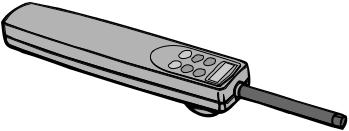
Chapter 1: Introduction |
3 |
Chapter 1: Introduction
1.1 Overview
-2 D5557
Your Raymarine tiller pilot is a totally self-contained autopilot designed for tiller steered sailboats. The autopilot is mounted between the tiller and a single attachment point on the boat’s structure. It is designed for owner installation and is ready for use after connection to the boat’s 12 V electrical system.
Operating modes
The tiller pilot has four basic operating modes:
•Standby mode: autopilot off
•Auto mode: autopilot engaged and locked onto a heading
•Track mode: autopilot on and maintaining a track between two waypoints created on a navigation system
•WindTrim mode: autopilot on and maintaining a course relative to an apparent wind angle
SeaTalk and NMEA compatibility
The tiller pilot is SeaTalk compatible, so it can share data transmitted from other Raymarine SeaTalk instruments:
•wind information from a wind instrument can be used for wind vane steering without the need to install a separate vane
•track information, from a navigator, enables the autopilot to provide waypoint control
•boat speed from a speed instrument can provide optimum track keeping performance

4 |
ST1000 Plus & ST2000 Plus Tiller Pilots |
•SeaTalk compatibility also allows additional fixed and hand-held autopilot control units to be easily connected at secondary steering and control positions
The ST1000 Plus and ST2000 Plus tiller pilots can also be used with any navigator transmitting NMEA 0183 or NMEA 0180 data.
The tiller pilot can be calibrated to suit each installation to provide maximum performance with many types of boat.
1.2 Specifications
General specifications
Power supply: |
10 V to 15 V DC |
|
|
Drive unit thrust torque: |
ST1000 Plus: 57 kg (125 lb) |
|
ST2000 Plus: 77 kg (170 lb) |
|
|
Maximum boat displace- |
ST1000 Plus: 3 000 kg (6 600 lb) |
ment: |
ST2000 Plus: 4 500 kg (10 000 lb) |
|
|
Drive mechanism: |
ST1000 Plus: lead-screw and nut drive |
|
ST2000 Plus: re-circulating ball drive |
|
|
Helm speed (lock to lock): |
ST1000 Plus: 8 seconds |
|
ST2000 Plus: 4.5 seconds |
|
|
Current consumption: |
• Standby: 40 mA (90 mA with full lighting) |
|
• Auto: 0.5 A to 1.5 A depending on boat trim, |
|
helm load and sailing conditions |
|
|
Operating temperature: |
0°C to +70°C (32°F to 158°F) |
|
|
Main features: |
• 6 button digital keypad |
|
• Backlit LCD display of heading, locked course |
|
and navigational information |
|
• User calibration for optimum performance |
|
• WindTrim control in WindTrim mode |
|
• SeaTalk compatible |
|
• Automatic compass deviation correction |
|
• Northerly/Southerly heading compensation |
|
• Automatic heading deadband – seastate control |
|
• Automatic tack |
|
• Built-in navigator interface (NMEA and SeaTalk) |
|
• Waypoint advance feature |
|
|
Chapter 1: Introduction |
5 |
EMC conformance
All Raymarine equipment and accessories are designed to the best industry standards for use in the recreational marine environment. The design and manufacture of Raymarine equipment and accessories conform to the appropriate Electromagnetic Compatibility (EMC) standards, but correct installation is required to ensure that performance is not compromised.
1.3 About this handbook
This handbook contains important information about installing, using and maintaining your new Raymarine product. To get the best from the product, please read this handbook thoroughly.
Important Information
Warranty
To register your new Raymarine product, please take a few minutes to fill out the warranty card. It is important that you complete the owner information and return the card to us to receive full warranty benefits.
Handbook information
To the best of our knowledge, the information in this handbook was correct when it went to press. However, Raymarine cannot accept liability for any inaccuracies or omissions it may contain. In addition, our policy of continuous product improvement may change specifications without notice. As a result, Raymarine cannot accept liability for any differences between the product and the handbook.

6 |
ST1000 Plus & ST2000 Plus Tiller Pilots |
Safety notices
WARNING: Product installation
This equipment must be installed and operated in accordance with the instructions contained in this handbook. Failure to do so could result in poor product performance, personal injury and/or damage to your boat.
WARNING: Electrical safety
Make sure the power supply is switched off before you make any electrical connections.
WARNING: Navigation aid
Although we have designed this product to be accurate and reliable, many factors can affect its performance. As a result, it should only be used as an aid to navigation and should never replace common sense and navigational judgement. Always maintain a permanent watch so you can respond to situations as they develop.
Your Raymarine autopilot will add a new dimension to your boating enjoyment. However, it is the skipper’s responsibility to ensure the safety of the boat at all times by following these basic rules:
•Ensure that someone is present at the helm AT ALL TIMES, to take manual control in an emergency.
•Make sure that all crew members know how to disengage the autopilot.
•Regularly check for other boats and any obstacles to navigation – no matter how clear the sea may appear, a dangerous situation can develop rapidly.
•Maintain an accurate record of the boat’s position by using either a navigation aid or visual bearings.
•Maintain a continuous plot of your boat’s position on a current chart. Ensure that the locked autopilot heading will steer the boat clear of all obstacles. Make proper allowance for tidal set – the autopilot cannot.
•Even when your autopilot is locked onto the desired track using a navigation aid, always maintain a log and make regular positional plots. Navigation signals can produce significant errors under some circumstances and the autopilot will not be able to detect these errors.
Product disposal
l
When you want to dispose of this product (for example, at the end of its working life), please do so in accordance with local regulations.
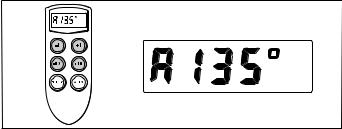
Chapter 2: Using the Tiller Pilot |
7 |
Chapter 2: Using the Tiller Pilot
2.1 Overview
WARNING:
Passage making under autopilot control is an enjoyable experience that can, if you are not careful, lead to the relaxation of the permanent watch. Always maintain a permanent watch no matter how clear the sea may appear to be.
•The tiller pilot always powers up in Standby mode (indicated by a flashing ‘C’ alongside the boat’s current compass heading).
•The tiller pilot is controlled using simple push-button operations, all of which are confirmed with a short beep. In addition to the main single key functions, there are several dual key operations.
•To select automatic steering:
•steady the boat on the required heading
•place the pushrod over the tiller pin (if necessary, extend or retract the pushrod using the -1, +1, -10, and +10 keys)
•press auto: the display will then show an ‘A’ alongside the current heading
•To return to manual steering at any time:
•press standby
•remove the pushrod from the tiller pin
•You can use the -1, +1, -10, and +10 keys to make course changes when the boat is under autopilot control.
D355-2
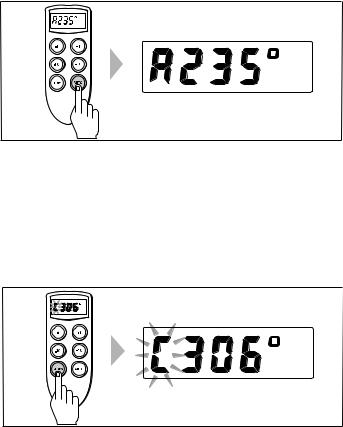
8 |
ST1000 Plus & ST2000 Plus Tiller Pilots |
2.2Using Auto mode
Engaging the autopilot (Auto mode)
D354-2
1.Steady the boat on the required heading.
2.Place the pushrod over the tiller pin. If necessary, extend or retract the pushrod using the -1, +1, -10, and +10 keys.
3.Press auto: the tiller pilot will enter Auto mode and the display will show an ‘A’ (for auto) alongside the locked autopilot heading.
Disengaging the autopilot (Standby mode)
D353-2
To return to hand steering:
1.Press standby.
2.Remove the pushrod from the tiller pin to return to hand steering: the display will show a flashing ‘C’ and the boat’s current compass heading.
3.The last heading is memorized and can be recalled (see page 10).
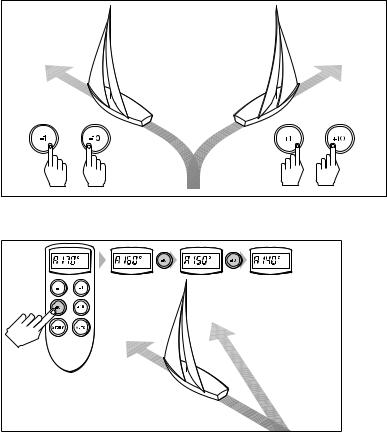
Chapter 2: Using the Tiller Pilot |
9 |
Changing course
In Auto mode, use the -1 and -10 (port) and +1 and +10 (starboard) keys to change course in steps of 1° and 10°.
Port |
Starboard |
or |
or |
|
D3320-3 |
For example: press -10 three times for a 30° course change to port:
30˚ to port |
Original |
|
course |
||
|
D3254-2
Automatic tack feature (AutoTack)
The autopilot has a built-in automatic tack facility (in Auto, Track and WindTrim modes) that turns the boat through 100°:
•to AutoTack 100° to port, press -1 and -10 together
•to AutoTack 100° to starboard, press +1 and +10 together
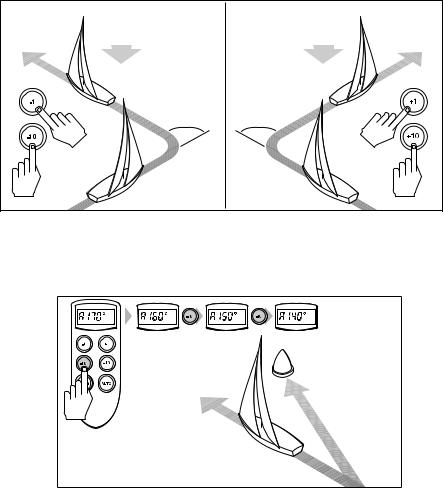
10 |
ST1000 Plus & ST2000 Plus Tiller Pilots |
AutoTack - Port |
AutoTack - Starboard |
Wind |
Wind |
AutoTack |
AutoTack |
angle |
angle |
|
D5399-2 |
Dodging obstacles
1.To avoid an obstacle when you boat is under autopilot control, select a course change in the appropriate direction. For example, press -10 three times for a 30°dodge to port.
Obstacle
30˚ dodge |
Original |
to port |
course |
D3255-2
2.When safely clear of the obstacle, you can either:
•reverse the previous course change (for example, by pressing +10 three times), or
•return to the previous heading (see below)
Returning to the previous heading
1.Press auto for 1 second: the previous heading will flash for 10 seconds.
2.To accept the previous heading, press auto again while the previous heading is flashing.
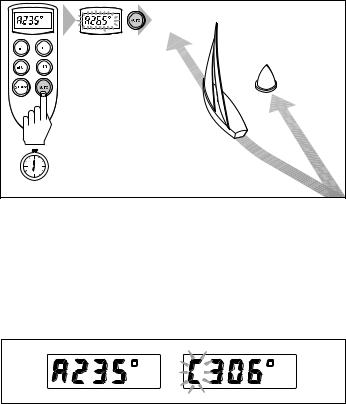
Chapter 2: Using the Tiller Pilot |
11 |
|
Resumed |
|
|
course |
|
|
Obstacle |
|
|
Original |
|
|
course |
|
SECOND |
Dodge |
D3256-2 |
|
||
|
|
Note: If you do not press auto while the display is flashing, the autopilot will maintain the current heading.
Off course alarm
The off course alarm sounds if the locked autopilot heading and the boat’s current heading differ by more than the value set in calibration level 6 (see page 62) for 20 seconds.
D191-2
Cancelling the off course alarm
To cancel the off course alarm, press standby to return to manual steering.
Note: If the off course alarm sounds, this is usually an indication that the boat is carrying too much sail, or that the sails are badly balanced. In these conditions, you can usually obtain significant improvements in course keeping by improving the sail balance.
Displaying navigation information pages
If navigation information (e.g. distance to waypoint, cross track error and bearing to waypoint) is available, you can display it in Auto mode or Standby mode by pressing either -1 and +10 or +1 and -10 together momentarily. The display will then cycle through the navigation information pages:
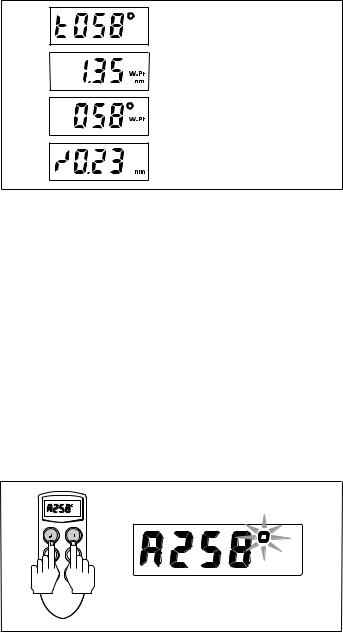
12 |
ST1000 Plus & ST2000 Plus Tiller Pilots |
Locked heading
Distance to waypoint (if available)
Bearing to waypoint (if available)
Cross track error
D178-2
You can revert to normal operation by pressing either -1 and +10 or +1 and -10 together again.
Automatic deadband control (Auto Seastate)
In Auto, WindTrim or Track modes, the tiller pilot is set to AutoSeastate (automatic deadband control) as a default. This causes the pilot to gradually ignore repetitive movements of the boat and respond only to true course variations.
By preventing unnecessary rudder movement, AutoSeastate provides the best compromise between power consumption and course keeping accuracy.
If you want to switch off the AutoSeastate feature:
1.From Auto, WindTrim or Track mode, press -1 and +1 together to switch from AutoSeastate to Fixed Minimum Deadband.
2.The “°” sign flashes when Fixed Minimum Deadband is selected. Minimum deadband provides the tightest course keeping possible, at the expense of increased power consumption and drive unit activity.
D360-3a
Chapter 2: Using the Tiller Pilot |
13 |
To switch back to AutoSeastate, press -1 and +1 again.
Note: The autopilot reverts to Automatic Deadband Control each time you select Standby mode.
Operating hints – trim changes
CAUTION:
Only make major course changes when steering MANUALLY. This ensures that the boat will safely clear any obstructions or other boats, and you can take into account the changed wind and sea conditions on the new heading before engaging the autopilot.
Large course changes which change the apparent wind direction can produce large trim changes. When a sudden trim change occurs (for example due to weather helm or sail imbalance) there will be a delay of up to one minute before the automatic trim applies rudder to restore the locked heading.
In these situations, the autopilot will not immediately assume the new automatic heading, and will only settle onto course when the automatic trim has been fully established. To minimize this problem, use the following procedure to make major course changes:
1.Note the required new heading.
2.Press standby, remove the pushrod from the tiller pin, and steer manually.
3.Bring boat onto the new heading and fit the pushrod back onto the tiller pin.
4.Press auto and let the boat settle on course.
5.Bring your boat onto the final course in 1° steps using -1 or +1.
Gusting conditions
In gusting conditions, the course may tend to wander slightly, particularly if the sails are badly balanced. By improving sail balance, you can improve course keeping.
If you take the following precautions, the autopilot will be able to maintain competent control even in gale force conditions:
•Do not allow the boat to heel over excessively.
•Ease the mainsheet traveller to leeward to reduce heeling and weather helm.
•If necessary, reef the mainsail a little early.
•It is also advisable (whenever possible) to avoid sailing with the wind dead astern when there are very strong winds and large seas.
•Ideally, the wind should be at least 30° away from a dead run.
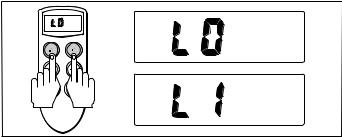
14 |
ST1000 Plus & ST2000 Plus Tiller Pilots |
•In severe conditions, it may be advisable to remove the mainsail altogether and sail under headsail only.
2.3Switching display illumination on and off
You can switch the display illumination on and off when the tiller pilot is in Standby mode:
•from Standby mode, press -1 and +1 together to switch the illumination between on (L1) and off (L0)
•to return to the previous mode either wait 10 seconds or press the appropriate mode key
D364-2
Note: The tiller pilot normally powers-up with the illumination switched on (L1).
If other SeaTalk instruments or autopilot control units are connected via SeaTalk, you can also control the tiller pilot’s illumination from these units.
2.4 Using Track mode
In Track mode, the tiller pilot maintains a track between waypoints created on a navigation system. The tiller pilot computes any course changes to keep your boat on track, automatically compensating for tidal streams and leeway. To operate in Track mode, the tiller pilot must receive cross track error information from either:
•a SeaTalk navigator, or
•a non-SeaTalk navigation system transmitting NMEA 0180 or 0183 data
Selecting Track mode
When you select Track mode, the tiller pilot can acquire the track in one of two ways:
•automatic acquisition – when both cross track error and bearing to waypoint data are available

Chapter 2: Using the Tiller Pilot |
15 |
• manual acquisition – when Cross Track Error is the only available information
Automatic track acquisition
If cross track error and bearing to waypoint data are both available (via SeaTalk or NMEA), the pilot can acquire a track automatically:
1.Bring the boat to within 0.1 nm of track.
2.Press auto.
3.Press -10 and +10 together to enter Track mode.
4.An alarm will sound and the display will alternate between:
•the bearing to waypoint, and
•the direction the boat will turn to take up the new track
Waypoint |
at 058˚ |
Current |
heading |
D3277-2 |
5.Check that it is safe to turn the boat onto the new course.
6.Press -10 and +10 together:
•the boat will now turn on to the new course
•the alarm will cancel
Waypoint
at 058˚
D3257-2
7.The display will continuously cycle through the following navigation information pages:
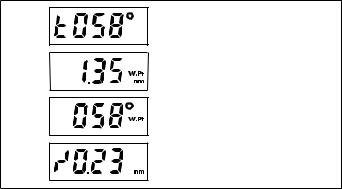
16 |
ST1000 Plus & ST2000 Plus Tiller Pilots |
Locked heading
Distance to waypoint (if available)
Bearing to waypoint (if available)
Cross track error
D178-2
Manual track acquisition
If your navigator only provides cross track error information, you must acquire the track manually:
1.Steer the boat to within 0.1 nm of track.
2.Bring the heading to within 5° of the bearing to the next waypoint.
3.Press auto.
4.Press -10 and +10 together to enter Track mode:
•the autopilot will start tracking to the waypoint
•the display will alternate between cross track error and the locked pilot heading
Manual track acquisition at low speeds
Using manual acquisition at low speeds requires additional care as tidal streams have a far more significant effect at lower speeds than at higher speeds.
In general terms, if the tidal flow is less than 35% of the boat’s speed, you will not notice any difference in the tiller pilot’s performance in Track mode. However, you should take extra care during manual acquisition, as follows:
•before you select Track mode, make sure that the boat is as close as possible to track, and that the direction made good over the ground is as close as possible to the direction of the next waypoint
•positive checks of the boat’s position at regular intervals are vital, especially if you are close to potential navigational hazards

Chapter 2: Using the Tiller Pilot |
17 |
Returning to Auto from Track mode
To return to Auto mode from Track mode:
•press auto, or
•press -10 and +10 together.
Cross track error (XTE)
Cross track error (XTE) is the distance between your current position and the planned route. This is displayed in nautical miles (nm) and is taken directly from your navigator.
Cross track error (XTE)
Waypoint 2
Waypoint 1
D3260-2
The tiller pilot displays the cross track error in the following ways:
On track
Off track to port (steer to starboard)
Off track to starboard (steer to port)
D3294-2
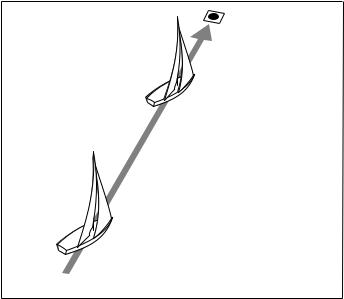
18 |
ST1000 Plus & ST2000 Plus Tiller Pilots |
Tidal stream compensation
Under most operating conditions, Track mode will hold the selected track to within ±0.05 nm (300 ft) or better.
The autopilot takes account of the boat’s speed when computing course changes to ensure optimum performance over a wide range of boat speeds. If speed data is available, the autopilot will use the measured boat speed. Otherwise it will use the default cruise speed entered in Calibration Level 5 (see page 62).
Boat's speed over ground
Waypoint 2
Tidal |
component |
|
water through speed Boat's
 Waypoint 1
Waypoint 1
D3261-2
Waypoint arrival and advance
CAUTION:
Waypoint advance will only operate if the tiller pilot receives valid bearing to waypoint and waypoint name information.
The tiller pilot can only decode the first FOUR characters of a waypoint name. It will not be able to decode names longer than four characters, which will stop the waypoint advance feature from working.
If your navigator transmits valid waypoint name and bearing to waypoint data, you can advance from one waypoint to the next by pressing -10 and +10 together.
Chapter 2: Using the Tiller Pilot |
19 |
Arrival
As the boat passes the target waypoint, the navigator manually or automatically selects the next target waypoint. The pilot will then:
•detect the new target waypoint name
•sound the waypoint advance alarm
•display the new bearing to waypoint and the direction the boat will turn to acquire it
Advance
When the waypoint advance alarm is sounding, the tiller pilot will suspend Track mode and maintain the current heading:
•check that it is safe to turn onto the new track
•press the -10 and +10 keys together: this will cancel the waypoint arrival alarm and turn the boat towards the next waypoint
Unless you accept the waypoint advance in this way, the alarm will continue to sound and the tiller pilot will maintain the current course.
Dodges in Track mode
In Track mode, you still have full control from the keypad:
•to make a dodge maneuver: use the -1, +1, -10 or +10 keys
•after you have avoided the hazard, reverse the course change selected for the dodge maneuver by selecting an equal course change in the opposite direction
•if the boat remains within 0.1 nm of track, there is no need to steer back towards the track
Safety in Track mode
WARNING:
Track mode provides accurate track keeping even in complex navigational situations. However, it is still the skipper’s responsibility to ensure the safety of their boat at all times through careful navigation and frequent position checks.
Passage making in Track mode assists precise navigation and removes the tasks of compensating for wind and tidal drift. However, you MUST still maintain an accurate log with regular plots:
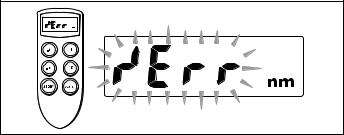
20 |
ST1000 Plus & ST2000 Plus Tiller Pilots |
Confirming position at the start of a journey
•At the start of a journey you must always use an easily identifiable fixed object to confirm the fix given by the navigation system.
•Check for fixed positional errors and compensate for them.
Verifying computed positions
•Always verify the computed position with a dead reckoned position, calculated from the average course steered and the distance logged.
Plot frequency
•In open water, you should make plots at least every hour.
•In confined waters or when near to potential hazards, you should make plots more frequently.
Setting waypoints
•Local variations in radio signal quality and changes in the tidal stream can produce deviations from the desired track. When setting waypoints, remember that deviations can occur.
•Thoroughly check along each track. Check up to 0.5 nm each side of the track to ensure that there are no hazards within this zone.
•For the waypoint advance function to work, the last four characters of adjacent waypoint names must be different.
Warning messages in Track mode
Track data not received
D167-5
The tiller pilot displays this message if you select Track mode when the autopilot is not receiving any navigation data.
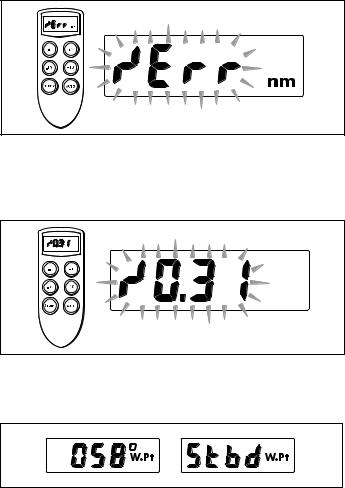
Chapter 2: Using the Tiller Pilot |
21 |
Track data error
D167-5
The tiller pilot displays this message if you select Track mode when the navigator has lost its fix.This display will clear as soon as the navigator regains its fix.
Large cross track error
D234-2
This alarm sounds if cross track error exceeds 0.3 nm.
Waypoint advance
D208-2
The waypoint advance alarm sounds whenever the target waypoint number changes:
•the pilot continues on its current heading, and the display alternates between the bearing to the next waypoint and the direction the boat will turn to take up that bearing
•make sure that the turn will be safe and, when you are ready to make the turn, momentarily press -10 and +10 together.
